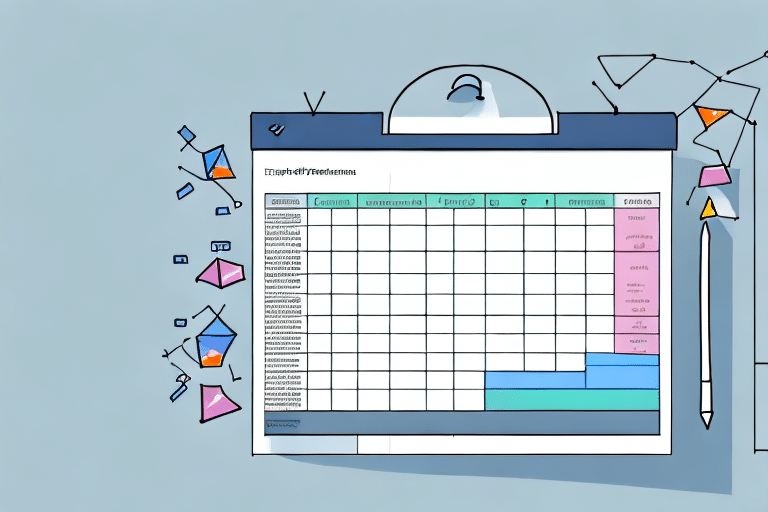Unlocking the Power of Customer Retention Cohort Analysis
In today's competitive business landscape, retaining customers is more crucial than ever before. While acquiring new customers is essential, it is retention that determines sustainable growth and long-term success. That's why businesses across various industries are increasingly turning to customer retention cohort analysis to improve their retention strategies.
What is Customer Retention Cohort Analysis and Why is it Important?
Definition and Basics
Customer retention cohort analysis is a method that businesses use to measure and improve customer retention rates. The analysis involves tracking groups of customers, or cohorts, that share specific characteristics, such as those who joined within the same time frame or made their first purchase in the same month. By analyzing these cohorts, businesses can better understand customer behavior and preferences, allowing for more effective retention strategies.
Importance in Business
The significance of customer retention cohort analysis lies in its ability to provide actionable insights that drive sustainable growth. According to a study by the Harvard Business Review, acquiring a new customer can cost up to five times more than retaining an existing one. Effective retention strategies can reduce churn rates, increase customer lifetime value, and enhance overall revenue. Moreover, strong customer loyalty contributes to a positive brand reputation and fosters long-term business success.
The Benefits of Cohort Analysis for Customer Retention
Understanding Customer Behavior
One of the primary advantages of cohort analysis is the detailed understanding it provides into customer behavior. By examining how different cohorts interact with a business over time, companies can identify patterns such as purchasing frequency, average order value, and response to marketing campaigns. This information enables businesses to tailor their approaches to meet the specific needs and preferences of each customer group.
Insight into Customer Segments
Cohort analysis allows businesses to segment their customer base more effectively. By categorizing customers based on shared characteristics or behaviors, companies can develop targeted marketing strategies, personalized product offerings, and optimized user experiences. Additionally, cohort analysis helps in recognizing seasonal trends and external factors that influence customer behavior, ensuring that retention strategies are both relevant and timely.
Identifying Valuable Customers
Through cohort analysis, businesses can identify which customer segments are the most valuable. By tracking metrics such as repeat purchase rates, referral rates, and customer lifetime value (CLV), companies can pinpoint the cohorts that contribute most significantly to revenue growth. This insight allows for the prioritization of resources and the development of specialized retention programs for high-value customer segments.
Reducing Customer Churn
Another critical benefit of cohort analysis is its ability to help reduce customer churn. By identifying the specific points at which customers tend to disengage, businesses can implement proactive measures to address the underlying issues. Whether it’s improving customer service, enhancing product quality, or adjusting pricing strategies, cohort analysis provides the data necessary to make informed decisions aimed at retaining customers.
How to Conduct a Customer Retention Cohort Analysis
Step-by-Step Guide to Conduct Cohort Analysis
- Define Cohorts: Determine the criteria for grouping customers into cohorts, such as the month of first purchase or signup date.
- Collect Data: Gather data on customer interactions and behaviors over time, including purchase history, frequency, and engagement metrics.
- Analyze Retention Metrics: Calculate key metrics such as retention rate, churn rate, and customer lifetime value for each cohort.
- Identify Patterns and Trends: Compare retention metrics across different cohorts to uncover significant patterns or trends in customer behavior.
- Develop and Implement Strategies: Use the insights gained to create targeted retention strategies tailored to each cohort’s characteristics.
- Monitor and Refine: Continuously track the effectiveness of retention strategies and make necessary adjustments based on ongoing analysis.
Best Practices for Effective Cohort Analysis
To ensure the accuracy and effectiveness of a cohort analysis, consider the following best practices:
- Use Accurate Data: Ensure that the data collected is accurate and up-to-date to avoid misleading insights.
- Segment Wisely: Choose segmentation criteria that are relevant to your business objectives and provide meaningful distinctions between customer groups.
- Regularly Update Analysis: Conduct cohort analysis periodically to account for changing customer behaviors and market conditions.
- Integrate with Other Data Sources: Combine cohort analysis with other data analytics tools to gain a more comprehensive understanding of customer behavior.
Implementing Retention Strategies Based on Cohort Analysis
Examples of Successful Retention Strategies
- Personalized Promotions: Offer targeted promotions and discounts to loyal customers or those who have acted as brand ambassadors.
- Customized Communications: Provide personalized content and communications based on customer behavior and preferences, such as recommending products or services of interest.
- Product Improvements: Implement enhancements based on customer feedback and continuously monitor retention rates post-implementation.
- Loyalty Programs: Create loyalty programs that reward customers for their continued business with exclusive discounts, early access to new products, or other perks.
- Proactive Engagement: Identify customers at risk of churning and proactively engage them with personalized incentives to maintain their interest.
Common Mistakes to Avoid
- Assuming Uniform Behavior: Do not assume that all customers within a cohort behave identically; recognize variations within segments.
- Overlooking External Factors: Consider external influences such as market trends and economic conditions that may impact customer behavior.
- Improper Segmentation: Avoid using overly broad or narrow timeframes that can obscure critical trends and patterns in customer behavior.
- Neglecting Data Accuracy: Ensure that data is clean and accurate to prevent flawed insights and ineffective strategies.
- Failing to Monitor Strategies: Continuously track and evaluate the effectiveness of retention strategies, and be prepared to adjust them as needed.
Leveraging Data Analytics in Cohort Analysis
The Role of Data Analytics
Data analytics is central to effective cohort analysis. By leveraging data analytics tools, businesses can process vast amounts of customer data to uncover meaningful insights. This deeper understanding of the customer base and their behaviors facilitates the development of targeted and effective retention strategies.
Predictive Analytics and Machine Learning
Advanced techniques like predictive analytics and machine learning are transforming cohort analysis. These technologies allow businesses to forecast customer behavior, identify potential churn risks, and anticipate trends. By integrating predictive models, companies can proactively address issues before they lead to customer attrition, thereby enhancing retention efforts.
Personalization Through Data Insights
Data analytics enables the personalization of retention strategies by identifying individual customer preferences. Businesses can tailor their retention efforts to include personalized offers, targeted marketing campaigns, and customized product recommendations, thereby increasing customer loyalty and reducing churn rates.
Tracking and Integrating Key Metrics
Important Metrics to Track
Tracking key metrics is essential for evaluating the effectiveness of cohort analysis and retention strategies. The most crucial metrics include:
- Customer Retention Rate: The percentage of customers who continue to do business with the company over a specific period.
- Churn Rate: The percentage of customers who cancel their relationship with the company during a given time frame.
- Customer Lifetime Value (CLV): A prediction of the total value a customer brings to the company over the entire duration of their relationship.
- Repeat Purchase Rate: The frequency at which customers make repeat purchases.
Integrating Cohort Analysis with Marketing Efforts
Integrating cohort analysis with other marketing initiatives allows businesses to apply the insights gained to enhance their overall marketing strategies. This integration enables the creation of more personalized and targeted campaigns, aligning retention efforts with broader marketing goals to maximize effectiveness and drive consistent customer engagement.
Case Studies and Future Trends in Customer Retention Cohort Analysis
Real-life Case Studies
Several businesses across various industries have successfully leveraged cohort analysis to enhance their customer retention strategies. For instance, Spotify utilized cohort analysis to refine their user engagement strategies, resulting in increased user retention and satisfaction. By analyzing listening behaviors and interaction patterns, Spotify tailored their recommendations and promotional efforts to better meet user preferences.
Another example is Airbnb, which used cohort analysis to understand booking patterns and optimize their customer support services. This led to improved customer experiences and higher retention rates.
Future Trends: Predictive Analytics and Machine Learning
The future of customer retention cohort analysis lies in the continued advancement of predictive analytics and machine learning techniques. These technologies are expected to further enhance the ability to predict customer behavior, identify emerging trends, and develop even more sophisticated retention strategies. By harnessing the power of artificial intelligence and data science, businesses can gain a competitive edge in maintaining and growing their customer base.
Emerging Techniques and Tools
As the field evolves, new techniques and tools are becoming available to facilitate more accurate and efficient cohort analysis. Innovations in data visualization, real-time analytics, and automated reporting are making it easier for businesses to conduct in-depth analyses and quickly implement insights into actionable strategies.
Best Practices for Using Data-Driven Insights from Cohort Analysis to Boost Customer Loyalty
Design Tailored Strategies for Each Cohort
Utilize the data and insights gained from cohort analysis to craft specific retention strategies that address the unique needs and behaviors of each customer cohort. Tailored strategies ensure that efforts are relevant and effective in enhancing customer loyalty.
Experiment and Iterate
Continually experiment with new retention strategies and monitor their performance. Use cohort analysis to evaluate the effectiveness of different approaches and iterate based on what proves to be most successful in retaining customers.
Stay Responsive to Customer and Market Changes
Remain attuned to shifts in customer preferences and market conditions. Regularly update retention strategies to reflect changing behaviors and external factors, ensuring that efforts remain relevant and impactful.
Conclusion: How Unlocking the Power of Cohort Analysis Can Transform Your Business's Bottom Line
In conclusion, customer retention cohort analysis is a powerful tool for businesses looking to improve their retention strategies. By conducting thorough analyses and acting on the insights gained, businesses can reduce churn rates, encourage repeat purchases, and ultimately transform their bottom line by strengthening customer loyalty over the long term.




















